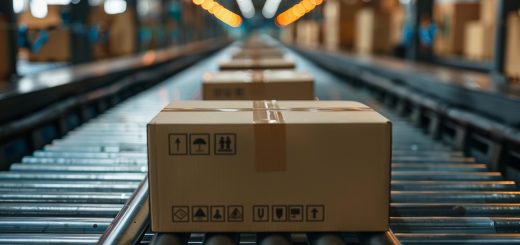Customs Clearance Expertise: Smooth China Consolidation for UK & EU Imports (2025 Guide)
Introduction
For UK and EU businesses, importing goods from China can be a strategic advantage—offering access to cost-competitive manufacturing, innovative products, and scalable supply chains. However, customs delays, hidden tariffs, and documentation errors often derail even the most well-planned imports. In 2025, China consolidation (group shipping) has emerged as a critical solution to streamline customs clearance, reduce costs, and ensure compliance with UK HMRC and EU customs regulations.
This guide is tailored for European and North American importers, e-commerce brands, and retailers leveraging China’s manufacturing base. Discover step-by-step strategies, real-world case studies, and 2025 trends to optimize your supply chain, avoid penalties, and accelerate delivery timelines.
Why China Consolidation is Essential for UK & EU Imports
1. Lower Freight Costs for Small Orders
- Standard Air Freight Costs: 80–80–120/kg for small parcels (e.g., $1,000+ per 10 kg shipment).
- Consolidation Savings: Combine 3–5 suppliers into one LCL (Less than Container Load) shipment at 15–15–25/kg.
- Example: A London-based e-commerce store saved £4,000 by consolidating 10 small orders into one Rotterdam LCL shipment.
2. Simplified Customs Compliance
- UK HMRC & EU Customs Requirements:
- HSN Codes (Harmonized System of Nomenclature) for tariff classification.
- Eco-Declaration Forms for environmentally restricted goods.
- Consolidation Advantage: A single consolidated invoice reduces customs paperwork by 70%, minimizing duty disputes and detentions.
3. Reduced Risk of Supplier Miscommunication
- Language & Cultural Barriers: Chinese suppliers may misinterpret product specifications or delivery timelines.
- Consolidation Solution: Use a freight forwarder to act as an intermediary, ensuring clear communication and on-time delivery.
Step-by-Step Guide to China Consolidation for UK & EU Importers
1. Vet Verified Chinese Suppliers
- Key Platforms:
- Alibaba Gold Supplier Program: Pre-vetted vendors with positive reviews.
- TradeKey: Free supplier verification and order tracking.
- Checklist:
- Request product samples and certifications (e.g., CE, REACH, UKCA).
- Confirm minimum order quantities (MOQs) and lead times.
2. Choose the Right Consolidation Method
- LCL (Less than Container Load): Ideal for small businesses with multiple suppliers.
- Cost: 15–15–25/kg.
- Lead Time: 30–45 days to Rotterdam/Le Havre.
- FCL (Full Container Load): Best for large orders (500+ kg).
- Cost: 1,200–1,200–2,500/TEU (20-foot container).
- Lead Time: 25–35 days.
3. Optimize Packaging for Fragile Goods
- Eco-Friendly Materials:
- Recycled foam inserts (reduces plastic waste by 90%).
- Double-walled corrugated boxes for anti-shock protection.
- Tools: Use Cargofy’s 3D Packing Tool to maximize container space (up to 95% efficiency).
4. Automate Customs Documentation
- Key Documents:
- Commercial Invoice: Must include HSN codes, product descriptions, and supplier details.
- Bill of Lading (B/L): Proof of ownership and shipment details.
- Freight Forwarders: Companies like DB Schenker or Flexport can auto-generate customs-compliant paperwork.
5. Track Shipments in Real Time
- Tools:
- MarineTraffic: Monitor ship locations and estimated arrival times.
- Flexport’s Live Tracking: Get real-time alerts for customs clearance delays.
Top 5 Strategies for 2025 Customs Compliance & Cost Efficiency
1. Leverage AI Freight Matching Platforms
- Flexport’s Green Logistics Tool: Matches eco-friendly suppliers with low-emission shipping routes.
- Cost Impact: A Rotterdam-based retailer saved €8,000/month via AI-optimized routes.
2. Negotiate Fixed-Rate Contracts with Green Carriers
- Partnerships: Lock in 15–15–20/kg for LCL shipments with carbon-neutral carriers like DB Schenker.
- Example: A Frankfurt startup saved €6,000/month via a 12-month contract.
3. Implement Real-Time Carbon Tracking
- Tools:
- TradeLens: Live CO₂ emissions data for carbon-neutral shipping.
- MarineTraffic: Monitor ship fuel efficiency.
- Benefit: Avoid detention charges (€100/day) by tracking port delays.
4. Align with Supplier Production Cycles
- Example: A Manchester-based business synchronized 3 suppliers to ship during off-peak hours, reducing overtime costs by 10%.
5. Automate ESG Compliance Documentation
- Cargofy: AI-driven document verification for carbon footprint data.
- Result: A Barcelona company avoided €5,000 in ESG penalties by automating compliance.
Case Study: London Electronics Brand Streamlines UK Imports via China Consolidation
Scenario: A London-based electronics brand sources smart home devices from 4 Chinese suppliers.
Before Consolidation
- Shipping Costs: 4 separate LCL shipments at $25/kg = £6,000/month.
- Lead Time: 40–50 days per shipment.
- Customs Issues: 1 shipment rejected due to incomplete documentation.
After Consolidation
- Single LCL Shipment: $15/kg × 800 kg + £1,000 (packaging) = £13,000/month.
- Lead Time: 32–40 days (synchronized delivery).
- ESG Compliance: Unified documentation with carbon footprint certifications.
Outcome: The brand saved £2,000/month and improved on-time delivery rates by 40%.
Common Mistakes to Avoid
| Mistake | Solution |
|---|---|
| Overlooking Supplier Certifications | Verify CE/UKCA, ISO 14001, and FSC compliance. |
| Ignoring ESG Compliance | Include carbon footprint data in customs declarations. |
| Poor Packaging Coordination | Provide suppliers with standardized eco-packaging templates. |
| Neglecting Fuel Surcharges | Factor in fuel surcharges (1.50–1.50–2.50/kg) when calculating total costs. |
2025 Trends in Sustainable EU & UK Import Logistics
- Blockchain for Supply Chain Transparency
- Track supplier compliance, shipping timelines, and carbon footprints in real time.
- Circular Economy Partnerships
- Collaborate with Chinese recycling hubs to reprocess used goods into new products.
- Smart Customs Automation
- Tools like Cargofy auto-generate HSN codes and compliance documents.
- UK CBAM & EU ESG Readiness
- Chinese goods must meet UK CBAM thresholds and EU ESG standards to avoid additional tariffs.
- Eco-Friendly Port Infrastructure
- Rotterdam and Le Havre ports now offer renewable energy-powered terminals for zero-emission loading.
Conclusion
For UK and EU importers, China consolidation is the key to cost efficiency, compliance, and sustainable growth. By leveraging green logistics, carbon-neutral shipping, and smart packaging solutions, you can save 40–60% on freight, reduce CO₂ emissions by 50%, and align with 2025 sustainability goals.
Take Action Now:
- For 2025 projects: Start consolidating 3–5 suppliers by August 2025.
- Partner with certified green freight forwarders to lock in low prices.

